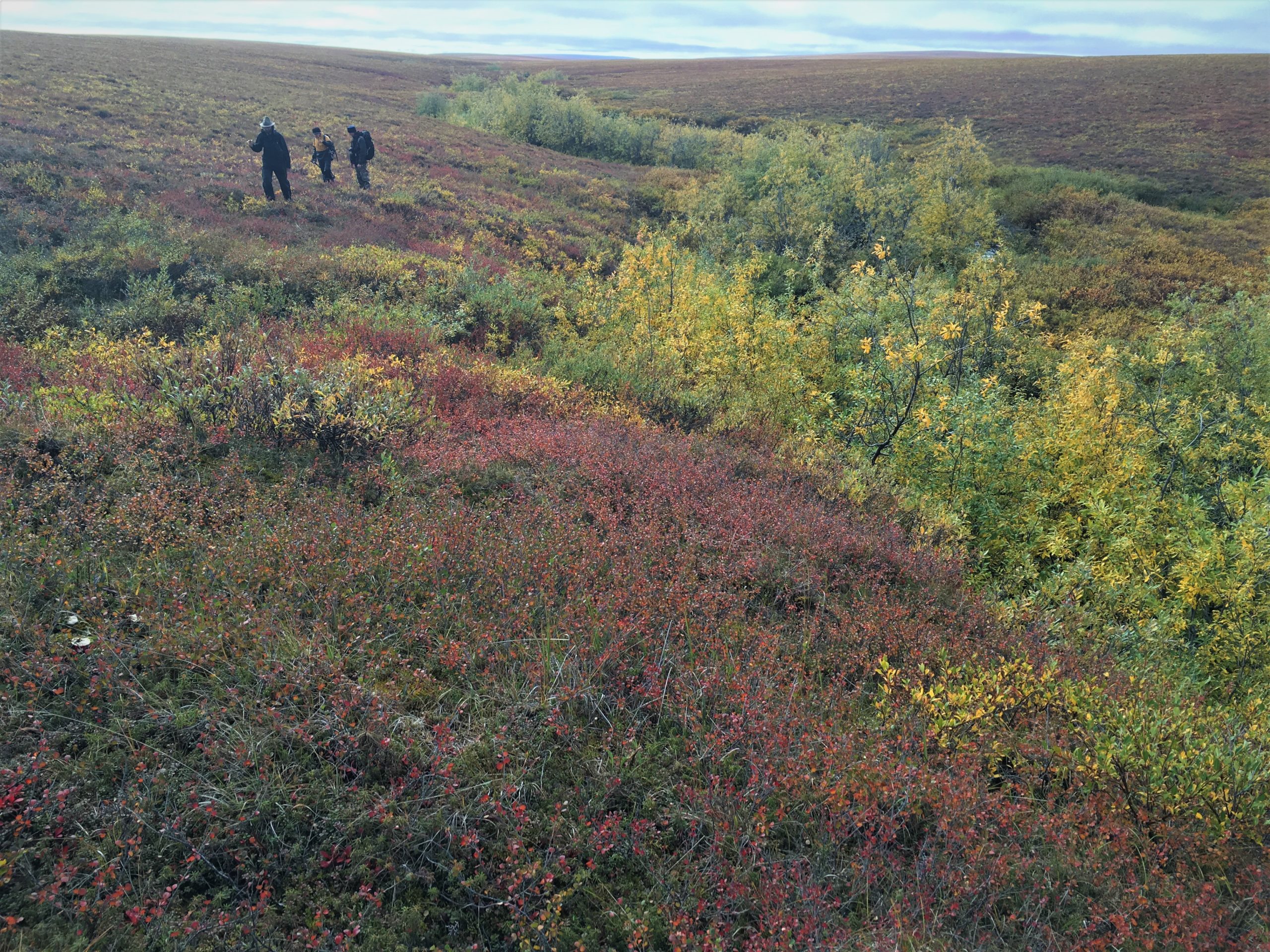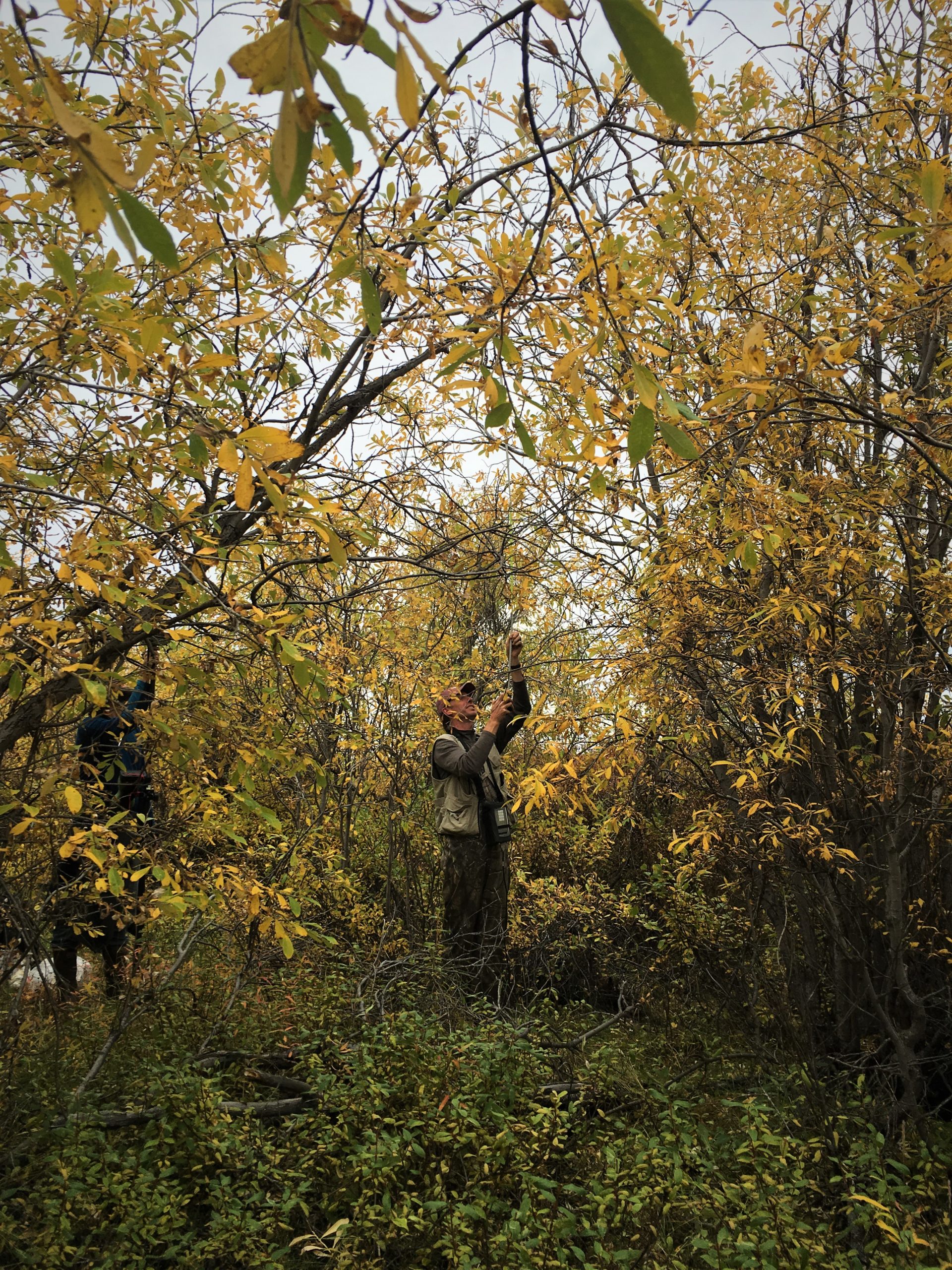How tall tundra shrubs reveal the hidden presence of permanently thawed tundra soil
Shrubs and talik create a positive feedback loop, reinforcing the thaw of permafrost and growth of larger shrubs.

Permafrost, ground that is frozen year-round, has a polar opposite: talik, ground that is thawed year-round. And when talik appears in permafrost landscapes, it is both a sign of thaw that has happened in the past and a precursor of thaw in the future.
Now some Alaska scientists have pinpointed a strong clue on the ground’s surface that can identify where there is talik below: the presence of tall shrubs. Where there are tall shrubs on the ground, there is likely to be talik below, a function of hydrology and shrubs’ year-round water requirements, according to a new study published in the journal Nature Communications Earth and Environment.
“I gave myself X-ray glasses,” joked lead author Anna Liljedahl of the Woodwell Climate Research Center and the University of Alaska Fairbanks.
The idea for the study came from her fieldwork in the eastern Brooks Range in 2015. The question came to her: “Why do some of the streams coming down from the hillsides have shrubs and others do not?” She also noticed that some streams seemed to peter out; she walked along some streams and noticed that the water disappeared — but then saw that the water popped out somewhere else.
The answer, the new study found, is that the streams go below the surface where there is talik. “The stream is still there. It’s just gone underground,” she said.
That liquid water absorbed by talik in summer and slowly released by talik in winter keeps the shrubs alive.
It’s a symbiotic relationship. When there is sufficient thaw and moisture, shrubs take root. Where there are shrubs, the soils are less likely to freeze.
That is partly because the conversion of tundra landscapes from small tundra plants to bigger woody shrubs removes a peaty layer that insulates cold ground from warm summer air, Liljedahl said. “When you get shrubs, you don’t have the moss anymore,” she said.
And in winter, the presence of shrubs on the tundra landscape catches more snow, and deeper snow layers insulate the ground from the chill in the air, she said, citing past work by UAF’s Matthew Sturm.
The study raises a chicken-and-egg question, Liljedahl said: Does shrub growth create talik, or does talik come first, enabling shrub growth?
There are indications that it is the latter, according to the study. To become established in permafrost-laden tundra, shrubs need some kind of disturbance like a thaw slump, Liljedahl said.
The study is the product of on-site work four years ago around the Toolik Field Station on Alaska’s North Slope. Liljedahl and her research partners, from UAF and other institutions, identified streams with tall shrubs and those without shrubs and tracked the flow of water in both types of streams.
They also analyzed soils, measuring microbial communities and using instruments to identify locations of freeze and thaw.
The usual typical way to locate permafrost is to travel at the end of summer and send a bore straight down through the earth. When the bore hits a hard surface that it cannot penetrate, it has reached permafrost.
Proving the existence of talik requires a similar technique at the end of winter, Liljedahl said. If the bore does not hit a hard surface, that means the soil has been unfrozen all year. “Suddenly you come to a place where you don’t hit the bottom, you don’t hit ice,” she said.
Probes showed that unfrozen soil area below the water-losing stream sections were as deep as 30 meters, according to the study.
As the Arctic climate warms, more shrubs are growing farther north, a sign of some big changes in the soils below. And some of the shrubs Liljedahl and her colleagues found have grown very tall — creating thick overhead canopies and perhaps crossing over into a different category.
“I would call them trees, because we measured one at 6 meters,” she said.
